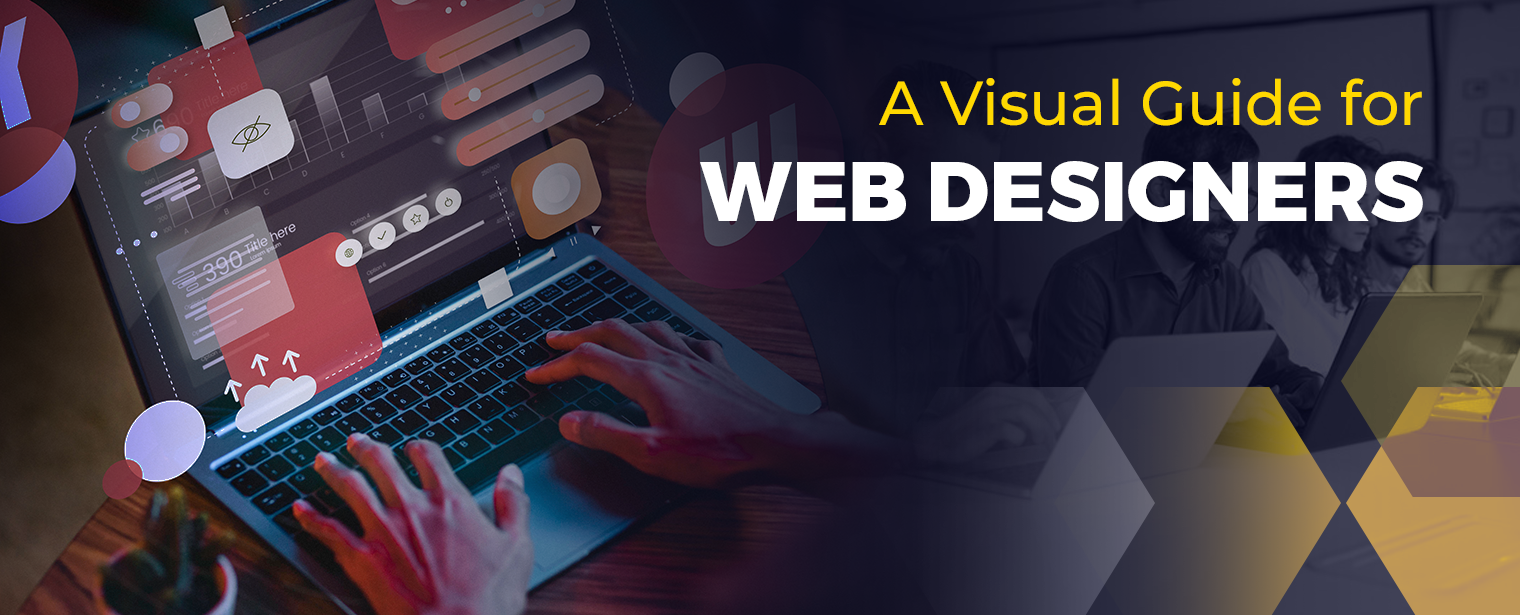A Visual Guide for Web Designers

The human eye is said to scan a visual thing first, read, and comprehend it later. Hence, no matter how good the web content is, if color is chosen and misused, it can drive visitors away from a web page. Within seconds, visitors form opinions about a brand based on the use of color schemes, which makes it more crucial for web designers to choose color pallets wisely.
Why choosing the right colors is important for web designers?
Customers perceive different colors differently. Starting from emotions to cultural significance, the choice of colors becomes crucial from various standpoints in website design.
Emotional significance: Green is associated with nature and growth.
Harmony and contrast: Harmony in color schemes reflects visual appeals and contrast reflects legibility and call-to-action texts.
Cultural significance: Black is considered holy in Western culture, but ominous in most Eastern cultures.
Psychology: Warm colors like yellow and orange generate a sense of welcome.
The standard color wheel- the primary tool for web designers
Before choosing color schemes for a website, learn the core colors in a standard color wheel.
Primary colors: Red, Blue, Yellow
Secondary colors: (result of mixing primary colors) green, orange, purple,
Tertiary colors: (result of mixing primary and secondary colors) red-orange, Yellow-Orange, Yellow-Green, Blue-Green, Blue-Purple, Red-Purple
Popular color schemes used by front-end web designers
Complementary – Two opposite colors on a standard color wheel when creating high contrast, are used as complementary color schemes.
For example- FedEx
Monochromatic – Different shades, tints, and tones of a specific core color if used in design, it’s called Monochromatic. It highlights simplicity, elegance, smooth readability, easy on the eyes.
For example- Facebook
Analogous – Using the colors placed next to each other on a color wheel creates an Analogous pattern. It reflects visual harmony, unified branding, subtle variety, and emotional connection.
For example- Mastercard
Triadic – Triadic consists of mixing three different colors, evenly placed on the color wheel that form triangles ( like red, blue, and yellow). It emphasizes balanced contrast, vibrancy, energy, visual hierarchy, and brand uniqueness.
For example- Burger King
Ideal industries according to color choices
Red – It grabs attention easily.
Industries – Food and beverages, entertainment, e-commerce, sports.
Orange – For a friendly, approachable feeling.
Industries – Technology, fitness, consumer goods, youth brands.
Yellow – Feeling of positivity and warmth.
Industries – Hospitality, children’s products, food and beverage.
Blue – Trust, reliability, intelligence.
Industries – Technology (software platforms), finance, healthcare
Purple – Luxury, spirituality, creativity
Industries – Luxury brands, cosmetics, fashion, wellness.
Brown – Earthiness, stability, comfort, warmth
Industries – Environmental brands, organic products brands,
Green – Natural and growth, feeling of peace
Industries – Health and wellness brands, environmental and sustainability brands, agricultural and sustainable lifestyle brands.

